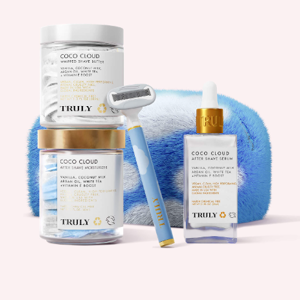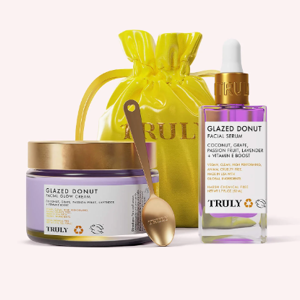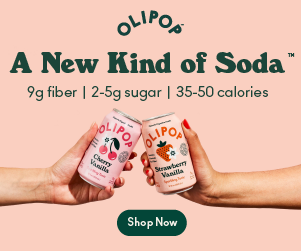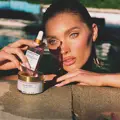Has your skin been feeling more temperamental than a two-year-old mid-tantrum? Or perhaps you've been noticing an increasing number of brands touting their "clean beauty" credentials? If so, you're not alone. Clean beauty has been making waves in the beauty industry, transforming it from a niche to a non-negotiable for many women. But what exactly is clean beauty, and why is it on the rise? That's where we come in!
From sensitive skin savers to natural ingredient champions, we're diving deep into the world of clean beauty. We'll break down what it means, why it's important, and introduce you to the basics. The we'll delve into a few brands that are revolutionizing the skincare game. So buckle up, beauty lovers - it's time to get clean!
"Clean beauty is not just a trend, it's a lifestyle change that's here to stay."
Let's start with the basics: what is clean beauty? Clean beauty refers to cosmetic and personal and hair care products made with ingredients that are safe for people and the environment. These ingredients are mindfully sourced and manufactured, free from harmful chemicals, and never tested on animals. Clean beauty is about providing healthier alternatives to conventional beauty products, prioritizing transparency, and promoting ethical and sustainable practices in the industry.
Where did the term Clean Beauty come from?
The term 'clean beauty' is fairly new, but its roots go way back. It emerged out of a growing concern for the lack of regulation in the beauty industry and an increasing awareness of the potential harm of certain beauty product ingredients. The term was coined to categorize products that are not only safe for use but also ethically produced and environmentally friendly.
The clean beauty movement gained momentum as consumers started questioning the ingredients used in their skincare products. A growing interest in wellness and sustainability also contributed to its rise. Now, clean beauty isn't just a trend—it's a movement driving a significant shift in the beauty industry.
It's important to note that 'clean' doesn't necessarily mean 'natural' or 'organic'. While many clean skin care products do use natural ingredients, the focus is on safety and transparency, regardless of whether the ingredients are natural or synthetic.

How is clean beauty different from regular beauty?
In the evolving world of beauty, the term 'clean beauty' has emerged as a game-changer, making a striking difference from regular beauty. But what sets it apart?
1. Ingredient Transparency
Clean beauty champions transparency to its core. Unlike regular products that use potentially dangerous ingredients, clean beauty brands take pride in disclosing every ingredient used in their products. They ensure that consumers know what they are putting on their skin. This shift in approach has won them hearts in the consumer market.
2. Safety Over Source
What makes clean beauty stand out from regular beauty is its emphasis on safety over source. The quote above perfectly summarizes this aspect. While regular products might not disclose whether their components are natural or synthetic, clean products are clear about this. The primary concern is not whether the ingredient is natural or synthetic but whether it is safe for use.
3. Prioritizing Health
Clean cosmetic ingredients prioritize health over aesthetics. Unlike regular products that focus on immediate results, clean beauty stresses long-term skin health. It's about nurturing your skin with safe, non-toxic, and effective ingredients, even if the visible results take time.
Is clean beauty the same as organic beauty?
Defining clean beauty can be tricky as the term is often interchanged with organic beauty. However, they are not exactly the same. Here's why.
Clean beauty refers to products that are made without ingredients shown or suspected to harm human health. This is a broader category that may include natural, organic, and non-toxic ingredients. The emphasis is on safety over sources.
“Clean Beauty is defined by products that are mindfully created and produced without any proven or suspected toxic ingredients.”
On the other hand, organic products are a subset of clean beauty. They contain ingredients that have been grown organically without the use of synthetic fertilizers, pesticides, genetically modified organisms (GMOs), sewage sludge, irradiation, or other chemical substances.
Essentially, all organic products can be considered clean, but not all clean beauty products are organic. Some clean products may contain safe synthetic ingredients.
-
Clean Beauty: Focus on safety over sources. May contain natural, organic, or safe synthetic ingredients. No harmful chemicals.
-
Organic Beauty: Contains ingredients grown organically. No synthetic fertilizers, pesticides, GMOs, or harmful chemicals.
What are cruelty-free products?
When beauty brands claim their products are cruelty-free, they're essentially asserting that no animal testing was conducted at any stage of the product's development. This means no animals were subjected to painful experiments or harmful ingredients. It's an ethical stance for the welfare and rights of animals.
Understanding Cruelty-Free Labeling
It's important to note that there isn't a single standard or definition for the term 'cruelty-free'. Different organizations have varying standards, and a product labeled as cruelty-free in one country may not be considered the same in another. In the U.S., for instance, there is no legal regulation for the use of this term.
Choosing cruelty-free products can make a significant impact on animal welfare and animal habitats. It encourages more brands to adopt ethical testing alternatives, leading to a reduction in animal testing worldwide. Plus, cruelty-free products often contain fewer harmful chemicals or animal derived ingredients, making them a healthier choice for your skin and body.
How can I support the clean beauty movement?
Supporting the clean beauty movement is a journey that begins with self-education. It’s about becoming conscious consumers and understanding the importance of what we put on our skin. After all, our skin is our largest organ, absorbing up to 60% of the products we apply.
Start by educating yourself about the ingredients in your skincare and makeup products. Understand the difference between organic, natural, and synthetic components. Next, support companies that promote clean beauty by purchasing their products. Encourage others to do the same by sharing your knowledge and experiences. Lastly, join or launch campaigns advocating for stricter regulations on conventional beauty companies and product ingredients. Remember, every small step counts on this journey towards a cleaner, healthier beauty industry.
What should I look for in safe cosmetics?
When it comes to clean beauty, knowing what to look for can be a bit of a minefield. With so many buzzwords and misleading labels out there, it's essential to understand exactly what we're putting on our skin. Here's a guide to help you navigate the clean beauty realm.
Look for Transparency
Transparency is key. Brands that value clean beauty are usually open about their ingredients and manufacturing processes. They'll often provide detailed information about what's in their products and why, and how those ingredients are sourced.
Check the Ingredient List
Always read the ingredient list. Clean beauty products should be free from harmful chemicals like parabens, sulfates, and phthalates. Instead, you should see natural ingredients that are gentle on the skin and environment. Recognizing these ingredients can be challenging, but worry not; there's a growing list of clean beauty brands committed to healthful, eco-conscious formulas.
What skin types benefit the most from using clean beauty products?
Non toxic beauty products are beneficial for all skin types, but they are especially helpful for those with sensitive skin. Traditional beauty products often contain potentially harmful ingredients, harsh chemicals and synthetic fragrances that can both irritate sensitive skin and inflame sensitive skin. Clean beauty products, on the other hand, are made with natural and organic ingredients that are gentle and nourishing for the skin. By using clean beauty products, those with sensitive skin can avoid potential allergic reactions and skin irritation.
Acne Prone Skin
Clean beauty products are also great for those with acne-prone skin. Many traditional beauty products contain ingredients that can clog pores and exacerbate acne. Clean beauty products, on the other hand, are often formulated with non-comedogenic ingredients that won't clog pores or cause breakouts. Additionally, many clean beauty brands offer products specifically designed to target acne and blemishes.
Dry or Aging Skin
Those with dry or aging skin can also benefit from using clean beauty products. Many traditional beauty products contain harsh ingredients that can strip the skin of its natural oils, leading to dryness and premature aging. Clean beauty products, on the other hand, are often formulated with hydrating and anti-aging ingredients such as hyaluronic acid and vitamin C. These ingredients can help to plump and firm the skin, reducing the appearance of fine lines and wrinkles
Oily Skin
Finally, those with oily skin can also benefit from using clean beauty products. Many traditional beauty products contain ingredients that can strip the skin of its natural oils, leading to overproduction of sebum and oily skin. Clean beauty products, on the other hand, often contain ingredients that help to regulate oil production and balance the skin's natural pH levels. By using clean beauty products, those with oily skin can achieve a more balanced and healthy complexion.
How can I transition to a clean beauty routine?
Transitioning to a clean beauty routine can seem daunting, but it doesn't have to be. The journey to clean beauty is a personal and gradual one, allowing you to make changes at your own pace. Here are some simple steps to help you get started:
Firstly, take inventory of your current beauty products and identify which ones contain harmful chemicals. Then, prioritize replacing products that stay on your skin the longest, like moisturizers and foundation. Remember, it's about progress, not perfection, so don't feel pressured to overhaul your entire routine at once.
Next, consider your skin type. Clean beauty products often contain ingredients that are more gentle on delicate skin, which is a big bonus if traditional products often leave you feeling irritated. You can even find natural beauty products specifically designed for acne-prone skin, dry skin, and other common concerns.
How can I incorporate clean beauty into my makeup routine?
Switching to clean beauty doesn't have to be an overwhelming task. It's all about incorporating small changes, step by step, for a healthier and more sustainable makeup routine. Ready to make the switch? Here's how you can do it.
Understand Your Skin
The first step in embracing clean beauty is to understand your skin. Everyone's skin is unique, and what works for one person might not work for another. It's important to know your skin type and its specific needs.
Research Natural Beauty Brands
With the rise of clean beauty, a number of brands are offering a wide range of products. Do your homework and find brands that are transparent about their ingredients and manufacturing processes. Some of our favorites include RMS Beauty, Ilia, and Kosas.
Start with the Basics
You don't have to overhaul your entire makeup routine at once. Start by replacing your basic products like foundation, mascara, and lipstick with clean alternatives. Once you're comfortable, you can start exploring more products.
Read the Labels
Just because a product claims to be 'natural' or 'organic' doesn't mean it's truly clean. Always read the labels and look for harmful ingredients like parabens, phthalates, and synthetic ingredients.
Less is More
Clean beauty is also about embracing a minimalist approach. Opt for products that serve multiple functions, like a tinted moisturizer with SPF or a lip and cheek tint. This not only saves you money but also reduces waste.
Take Your Time
Transitioning to clean beauty is a journey, not a destination. It's okay to take your time and make the switch at your own pace. Remember, the goal is to make healthier choices, not to achieve perfection.
Top 10 Clean Brands To Update Your Makeup & Skincare Routine
When it comes to clean beauty, it can seem like a daunting task to know where to start. However, several brands have emerged as leaders in the clean beauty space and cosmetics industry, offering a wide range of products that prioritize natural ingredients and advocate for transparency. Here are 10 popular clean beauty brands that are leading the charge:
1. Beautycounter
This California-based brand is a pioneer in the clean beauty movement, offering everything from skincare to makeup. They have a Never List of over 1,500 harmful or questionable ingredients that they never use in their products. They use plant-based ingredients and sustainable packaging, using natural resources such as glass bottles and recycled plastic.
2. Truly Beauty
Combining health, sustainability and performance, Truly Beauty discovers beauty trends, secrets, and ingredients from around the world to create complete hair, body, and skin care products. Their vegan and clean formulations deliver luxury without compromise, yielding impressive results. With Truly, you get natural, high-end beauty products that offer both healthful ingredients and a luxurious experience.
3. Herbivore
Herbivore's products are made with the highest quality, food-grade, organic ingredients. They use glass bottles and jars that are recyclable and biodegradable packaging materials.
4. RMS Beauty
A favorite among celebrities, RMS Beauty is dedicated to transforming the way women use makeup. They also use recyclable glass packaging and have a program where customers can send back empty containers to be recycled with a goal for zero waste.
5. Tata Harper
Known for its luxurious, high-performance products, Tata Harper is a go-to for many beauty enthusiasts. They grow many of their own ingredients on their farm in Vermont and use glass bottles and jars that are recyclable. They also use renewable energy sources to power their production facilities.
6. Ilia
Ilia is a brand that fuses skincare with makeup, using bio-active botanicals in their formulations. Their product packaging is sustainable using recycled aluminum and glass where customers can send back empty containers to be recycled to reduce their environmental impact.
7. Juice Beauty
With a commitment to providing clean skincare and makeup products that are as good for your skin as they are for the planet, Juice Beauty is a reliable choice. They use recycled packaging materials and have a program where customers can send back empty containers to be recycled for environmental sustainability.
8. Credo Beauty
Credo Beauty is a renowned clean beauty retailer with a commitment to providing customers with a curated selection of safe and sustainable natural beauty and products. With a mission to promote a healthier and more conscious approach to beauty, Credo rigorously screens and verifies the ingredients of all the brands they carry. Credo sets high standards for the products they stock, ensuring they are free from harmful chemicals, parabens, phthalates, and other potentially harmful substances.
9. Lava Art
Lava Art Cosmetics is a Norwegian cruelty-free make-up brand that operates across Europe and around the world. Nature is the main source of inspiration for the products. Lava Art strives to keep nature away from exploitation or any kind of harm.
The brand is committed to the environment and always puts environmentally friendly practices first. Such a mindset is deeply rooted in every part of the Nordic way of life - from the ingredients selected, to the materials used for packaging. This is the way Lava Art imagines the world should be - natural and taken care of and is what we LOVE about their products!
10. True Botanicals
True Botanicals' products are made with the highest quality natural ingredients, proving that you don't have to choose between safe ingredients and effective, skincare products.
Understanding Sephora's Clean Beauty
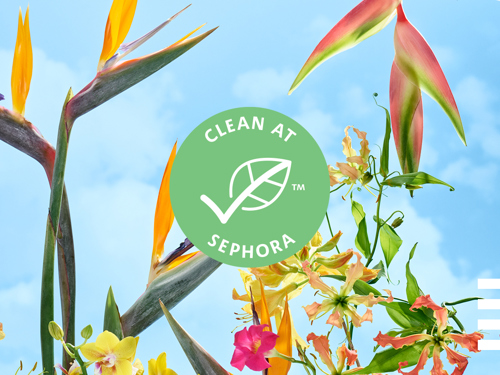
One of the leading beauty retailers, Sephora, has also embraced the clean beauty movement with their own "Clean at Sephora" initiative. But what exactly does this mean?
Clean at Sephora products are not necessarily all-natural, cruelty-free, or inherently more effective than other products. Each claim stands independently, without any correlation to the others.
When customers come across the Clean at Sephora seal in stores or while browsing product pages, it indicates that these products are formulated without certain ingredients that some people may prefer to avoid. These ingredients include sulfates, mineral oil, phthalates, significant amounts of synthetic fragrance, and more.
The Verdict
The rise of green beauty is a testament to how far we've come in understanding our skin, our bodies, and the effects of what we put on them. As we become more knowledgeable, it's only natural that we demand more from our beauty products - not just performance, but safety, sustainability, and transparency too. Green beauty is becoming more available in all types of cosmetic products like nail polish, hair products, personal care products, lib balms, body products and more! Just take time to research brands and you'll be on your way in supporting the clean beauty movement and embracing your natural beauty!


